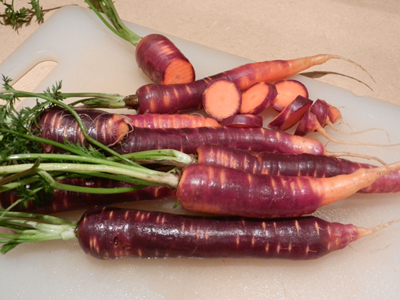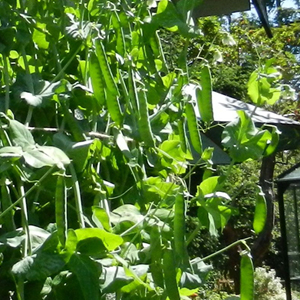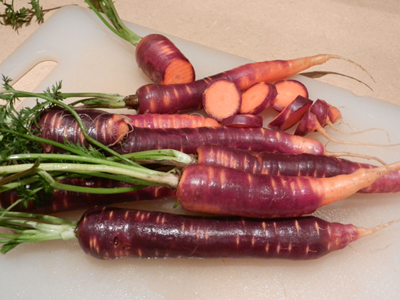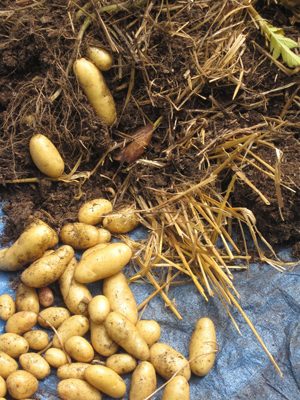The Veggie Garden In Review, Summer 2013
While the vegetable harvest is still fresh in your mind, fall is a good time to take stock of what grew and what didn’t. Thanks to a nice warm summer with lots of sunshine, most of us had a bountiful crop. Here are some of our observations:
* We did some trials of potting soil here at the nursery and in our home gardens, and we found the Organic Potting Soil amended with compost to be the most productive for crops grown in containers. We started equal plants in My Soil, and while they got off to a faster start, those grown in either Organic or Growell caught up. Brian did a taste test of his tomatoes and thought those grown in Organic Potting Soil had the best flavour.
* Veggies in the garden beds as well as those in containers did best when we stuck to a regular regime of liquid fertilizer. Last year I neglected this, and the results were obvious. I also had very positive results with compost tea this year.
* The beds built using the Lasagna Gardening method have remained my most productive beds. This year I’ll be adding layers of manure, straw, compost, leaves and seaweed to my other beds as well, topping them off with a layer of soil, like icing on the cake.
Some specific crop observations:
Started Sugar Snap Pole (Pacific Northwest Seeds) and Tall Telephone (West Coast Seeds) in vermiculite, in seed trays in the house, March 8. Once they were up, I moved them to an unheated greenhouse, but any bright, protected place outdoors where the rodents and birds can’t get them, would be ok. Planted densely outside when 4” tall, the 7’ tall vines were laden with peas for weeks.
LEEKS
Leeks started in March will produce all year. Unique, from Full Circle Seeds, (a local company) is a hardy variety that I’ve enjoyed them all summer. They are still in the ground for winter harvest. Another good one is Bandit (WCS).
Two varieties, Nantes Coreless (PNW) and Purple Haze (WCS), my new favourite carrot, were seeded outdoors in a raised bed on April 24. They grew very well and were harvested all summer. Started more on July 4 for winter harvest. Covered them with ProTekNet as soon as they germinated, to foil the Carrot Rust Fly.
BEETS
I direct seeded Early Wonder Tall Top (WCS) on May 16 but this was too late. Only a few were ready for summer harvest, but they are still in the ground for winter eating. I also seeded some on July 4 specifically for winter. Sue was served a dish made with Touchstone Gold (WCS), and her review was so fantastic, I seeded them, in a large cedar planter, in early July for winter use. I have had problems this year with leaf miners in my red beet leaves, next year will cover with ProTekNet.
ASIAN GREENS
I bought some seeds in Japan last year; Komatsuna, Leaf Mustard, and Bekana. In March I started them indoors under lights, and moved them outside on May 8, which was a bit late. I have started more for winter, and they have grown very large very quickly, and will soon be planted into large pots. Any of our seed companies are good sources for these greens.
KALE
Everyone can grow kale. I always grow Lacinato from seed, directly in the ground in a raised bed. Started April 24, they grew well all summer and will continue all winter. I kept them under the netting with the carrots to avoid the Imported Cabbage Worm, so the only pest I’ve had is aphids, which seem to arrive no matter where you plant them
SWISS CHARD
Bright Lights (PNW) chard is a consistent winner whether grown from seed or starts. This year the leaf miners have been bad, so like the beets, chard will be started under ProTekNet next year. Last winter I had spring-planted chard growing both inside the greenhouse and outside in the ground, and both thrived. I was picking leaves the following spring.
SPINACH
For me, spinach will only be a winter crop from now on. It bolts in spring with lengthening days, so by the time it can be seeded, it’s almost time to bolt. Seeding in late August ensures a crop all winter. While spinach grows well outside in our winters, my small greenhouse has produced Samish (WCS) spinach that almost gleams – green perfection.
BEANS
Beans were started May 6 in vermiculite. To save space and have a longer harvest time, I grow only pole beans. Fortex (WCS) is the tastiest bean of all, in my opinion, and I grew this in a large, deep pot with tall cedar stakes for support. Harvest was good, but not great. Next year I’ll use a raised bed. Purple Peacock (WCS), grown in one of the lasagna beds, produced copiously. The purple pods grow rapidly once they start, and usually got ahead of me, becoming larger than I like. More vigilance required next year!
CUCUMBERS
Were grown in large cedar planters in the greenhouse this year, but next year I will have some outside as well, to keep the season going longer. Favourites are Sweet Success (WCS) and Lemon Cucumber (WCS). Watered and fed well, given support to climb, these were total success crops.
ZUCCHINI
I grew one plant for my family of two. Partenon doesn’t need pollination, so every flower produced fruit; just enough. Seeds from William Dam Seeds; don’t worry, I’ll get enough next year to start plants for sale at the nursery!. (Sue agrees, one plant is all you need!!)
Since I have a small garden with limited sun, I grow potatoes in huge containers, layering good compost with soil and straw. I lapsed a bit with the watering, but will do better next year (really). Banana and French Fingerling, both small gourmet types, do well for me.
TOMATOES
I started several varieties from seed indoors on March 21, then moved up to 4” pots in greenhouse on May 11. They should have gone into these larger pots sooner, but the weather was cold. Principe Borghese (good for roasting) and Graham’s Goodkeeper (good for longer term storage, ripening over the fall) are old favourites of mine, both from Seeds of Victoria. This year they didn’t produce as many tomatoes as I’d like, but they were grown in a bed that needs more amendments. I’ll layer some good organics such as manure, straw, compost, seaweed and leaves onto this bed to overwinter.
I trialed the mycorrhizae fungi (Myke) additive, and found no difference at all, so I won’t try that again. I also trialed the red plastic trays from WCS supposed to reflect some special light rays, but these also didn’t overwhelm me.
Sungold produced generously, as did my grafted (Mighty Mato) Black Cherry. Brian counted 225 tomatoes on his Black Cherry! I’ve been disappointed with Oregon Spring, but the Sweet 100 in the Grow Bag produced plentiful, tasty fruit. The indeterminates should have been pruned earlier to remove the suckers, I turned my back and there were 6 stems.
My best and most valuable gardening practice has been keeping good records of when and where I start various crops. There is lots of room for improvement here, but by looking back on the current year’s crop, and learning from mistakes while building on successes, next year can only get better.
Happy gardening to all!





